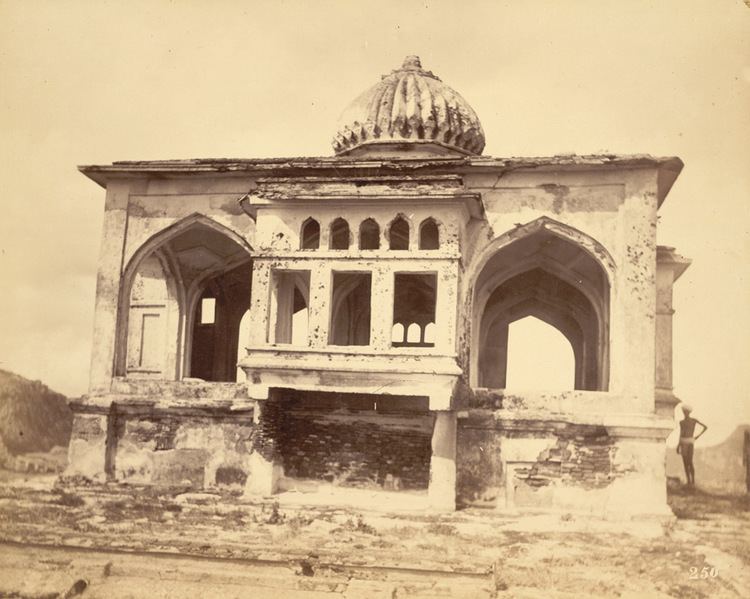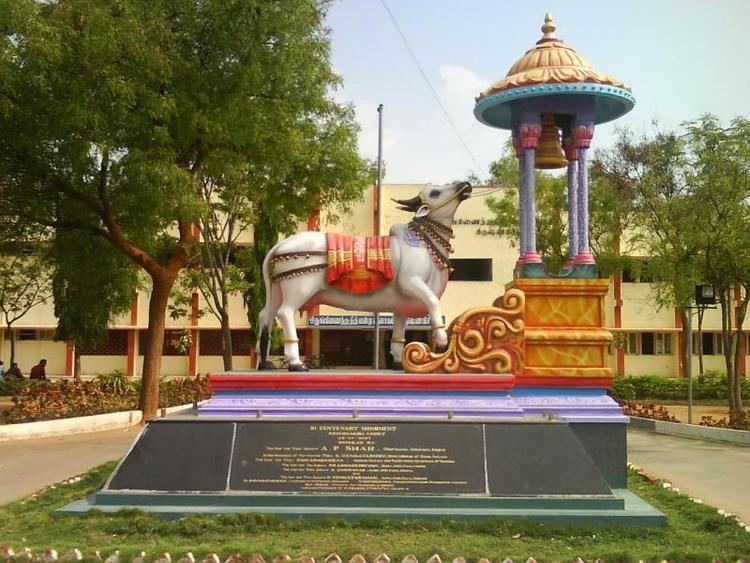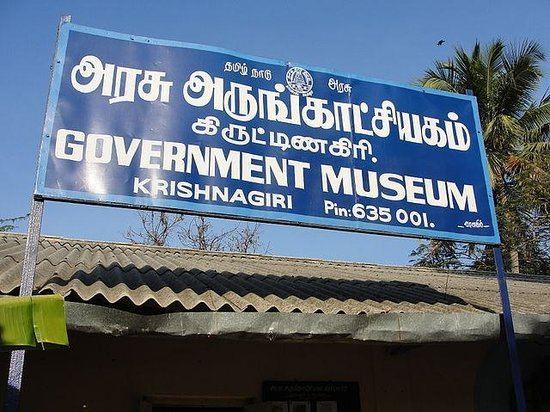Country India Language spoken District Krishnagiri | State | |
 | ||
University Government College of Engineering, Bargur | ||
Map of Krishnagiri
Krishnagiri is a municipality town and administrative headquarters of Krishnagiri District in the part of Kongu Nadu region in western part of Tamil Nadu. It is located at the bottom of Syed Basha Hill, and the town is fully surrounded by Hill rocks. It is located 90 kilometres (56 mi) from Bangalore and 45 km from Hosur. and 40 km from Dharmapuri. Mango is cultivated as the main crop, and the land here is extremely fertile with rich access to fresh water making it amenable to growing crops. Krishnagiri is a rapidly growing town and is the site of significant business and residential development. The Krishnagiri Dam is currently undergoing expansion and a variety of small-scale industry zones are being set up. As of 2011, the town had a population of 71,323.
Contents
- Map of Krishnagiri
- Outing krishnagiri dam in tamil nadu india
- Indian street food 3 fresh fish fry fish stall near krishnagiri dam indian fish fry
- Geography
- Demographics
- Economy
- Transport
- Tourism
- Politics
- Tasty butter masala dosa indian street food very very tasty dont miss it
- References

The Krishnagiri district has a prehistoric importance. Archeological sources confirm the presence of habitats of mankind during Paleolithic, Neolithic and Mesolithic Ages. Various rock paintings and rock carvings of Indus Valley civilization and Iron Age seen in this district support the historical significance of this district.

Krishnagiri region is a part of the ancient Kongu Nadu and Chera country. Historically it was ruled by Kongu and Chera rulers. Later the region came under Cholas, Pallavas, Gangas, Nulambas, Hoysalas, Vijaya Nagar and Bijapur emperors, Wodeyars of Mysore and Nayaks of Madurai. This region of Krishnagiri served as "Gateway of Tamil Nadu" and the protective barrier for the southern region defending onslaughts from invaders with motives of imperialism and exploitation. Krishnagiri Fort become the first and foremost defensive place. The majestic fortress, built on Krishnagiri hill by the Vijaya Nagar emperors, stands as testimony still now.
During Mysore war I, the British troops passed through Krishnagiri to attack Hyder Ali's Forces at Kaveripattinam. British army was defeated here. In Mysore war II after the "Treaty of Srirangapattinam" entire region of Salem and Barah Mahal were surrendered to the British. In 1792 AD, Captain Alexander Reed became the first District Collector of this region. Under the diplomacy of Robert Clive, the then Governor of Madras Presidency, Krishnagiri became the headquarters of Bara Mahal.
A mint was established at Krishnagiri in 1794 AD. Gold, silver and copper coins were forged here. Many soldiers from Krishnagiri region took part in the world war and lost their lives. Dr. C. Rajagopalachari, who hailed from a small village in this district rose to the highest position in the nation as the first Governor General of independent India, leader of the Congress Party, and as Chief Minister of Tamil Nadu. Thiru. Mangat Ram Sharma, I.A.S. has administered the office as first Collector of Krishnagiri District. The historical importance and potential growth in education, economy and tourism of present Krishnagiri made it necessary to create a separate district. Krishnagiri was formed as 30th district by the Government of Tamil Nadu. Krishnagiri district was carved out of Dharmapuri district on 9 February 2004 with five taluks and ten blocks.
Outing krishnagiri dam in tamil nadu india
Indian street food 3 fresh fish fry fish stall near krishnagiri dam indian fish fry
Geography
Krishnagiri experiences tropical climate during the summer. The summers are much rainier than the winters in Krishnagiri. This climate is considered to be Aw according to the Köppen-Geiger climate classification. The temperature here averages 26.5 °C. Precipitation here averages 789 mm. Monsoon season brings substantial amount of rainfall to this region and Krishnagiri experiences a long monsoon. Winters are generally pleasant and comfortable. This is the best time to visit the place. There are three distinct seasons that can be seen in Krishnagiri. Summer is from the months of March to June. During this time temperatures are warm and mercury rise up to around 38 °C and dipping a minimum of 32 °C. April and May are generally the hottest months of the year and the heat could be uncomfortable. Monsoon season is from the months of July to November. During this time temperatures are mild and pleasant. Heavy rainfall can be expected in short intervals. Monsoon season is also a good time to visit as there are breaks in the rainfall. December to February constitutes the winter months and the temperature falls to 13 °C It is the best time to visit the place.
Demographics
According to 2011 census, Krishnagiri had a population of 71,323 with a sex-ratio of 1,015 females for every 1,000 males, much above the national average of 929. A total of 7,748 were under the age of six, constituting 4,059 males and 3,689 females. Scheduled Castes and Scheduled Tribes accounted for 10.64% and .18% of the population respectively. The average literacy of the town was 76.79%, compared to the national average of 72.99%. The town had a total of 16386 households. There were a total of 24,559 workers, comprising 187 cultivators, 99 main agricultural labourers, 640 in house hold industries, 22,230 other workers, 1,403 marginal workers, 10 marginal cultivators, 42 marginal agricultural labourers, 207 marginal workers in household industries and 1,144 other marginal workers.
As per the religious census of 2011, Krishnagiri (M) had 71.37% Hindus, 24.7% Muslims, 3.77% Christians, 0.05% Sikhs, 0.07% Jains, 0.03% following other religions and 0.01% following no religion or did not indicate any religious preference.
Economy
The national fruit of India and of the state of Tamil Nadu is mango. The major crop of Krishnagiri district with 300.17 km² area of cultivation is mango. The district produces 300,000 tones annually and in Tamil Nadu Krishnagiri District is the First Place in The Production of Mango. Almost 20% of the mango varieties like ‘Thothapuri’ and ‘Alphonso’ that are produced in this district, are processed into pulp. In addition to mango pulp processing, tonnes of mangoes are processed into juice every year in this district. A large-scale mango export zone has been approved for the Krishnagiri district. This will allow growing as well as processing of mangoes thus yielding higher profits for the farmers.
Approximately 25 industries located in this district process mangoes. Much of the population in this district is employed through mango cultivation directly and other labour class benefit through employment in mango processing units. There are about 150 mango nurseries which produce mango saplings in and around ‘Santhur Village‘ . The district exports mango based products worth over ₹8 billion. Under the horticulture development program, government owned horticulture farms are functioning here. Through these units, about 300,000 fruit saplings are produced and distributed under different schemes. Apart from production and export, Krishnagiri also hosts Mango exhibition every year which is the unique in its kind in line with the annual exhibition held at New Delhi.
Krishnagiri is an Urbanized Town well connected between three States of South India (AP, Karnataka and Tamil Nadu) by AH7 (Asian Highway 7). Apart from Mango Cultivation; one can find way big choices of eateries like Creme & Donuts, McDonald's. Traditional sweet Arcot Makkan Peda is something one should taste before leaving the town. Cloth stores like Derby Jean and lots of Shopping malls are upcoming inside the town. Boat club and Park at the outskirts are good places to visit.
Transport
Krishnagiri is well connected to various parts of India through several National Highways that include Krishnagiri–Ranipet NH 46, Puducherry–Krishnagiri NH 66, Krishnagiri–Madanapalli NH 219 and Varanasi–Kanyakumari via Krishnagiri NH 7.
Krishnagiri connects 3 different states i.e. Tamil Nadu, karnataka and Andhra Pradesh
The National Highway from Hosur to Krishnagiri is currently undergoing expansion from four-lanes to six-lanes.
The new bus stand on the outskirts of the town is well connected by government buses and private carriers to Chennai, Bengaluru, Coimbatore and other major cities and towns in Tamil Nadu, Karnataka, Andhra Pradesh, Kerala and Puducherry.
The nearest railway junction is Kuppam,Andhra Pradesh (35 km) and Jolarpet (60 km) and the nearest railway station is Dharmapuri(45 km) and rayakotta(30 km).A proposal is before the central government -via Jolarpet-Hosur route to build a Railway station in Krishnagiri thus making it part of the Indian railway network. This is set to facilitate trade of textiles and fruits .As per new budget report, the proposed new line would take off from Jolarpet Junction, Tirupattur and pass through Kandili, Bargur, Krishnagiri and Shoolagiri a length of 104 km to join at Rayakottai. Another survey was conducted for a new rail link between Krishnagiri and Dharmapuri in 2004-05.
The nearest commercial airport is Bengaluru International Airport (91 km) and Salem Airport (110 km).
Tourism
Thousands of visitors visit Krishnagiri each year. Majority come from Hosur, Bangalore, Dharmapuri,Vaniyambadi,Ambur and Chennai. The Krishnagiri Dam (Krishnagiri Reservoir Project Dam)is constructed in 1958 during the rule of the then Chief Minister Kamaraj is located near the town. Nearby, Sayed Basha hills has a fort that was the fortress of the ruler, Tippu Sultan. Treks to the nearby hills/mountains as well as farm houses are located in the outskirts. The boat house is situated 8 km from the central bus stand which also houses a children's park. There are a variety of ancient temples in the vicinity of Krishnagiri. Nearby Ramapuram is the site of a 500-year-old Rama Temple that draws many visitors each year.
The presence of museum in this District is known for traditional culture, Art and Architecture, Heritage and Historical Background is a blessing in disguise, to spread the traditional and heritage, culture and art of Tamil Nadu and Krishnagiri District in particular. This museum is functioning since 1993 AD, situated on Gandhi Salai in Krishnagiri. Historical monuments are preserved and exhibited here. It is not only a place of tourism but also a center of education. This museum collects the monuments, Classifies and preserves them to conduct research on its historical worthiness.The syed Basha Mountain is very famous for two Sufi martyr saints who had been slain in a battle long ago, every year on 10th of Shawwal (Islamic month) a grand celebration is made . Almost thousands gather during this Urs festival with devotion and respect.
Politics
In the Tamil Nadu Legislature, Krishnagiri Assembly Constituency is a part of Krishnagiri Lok Sabha Constituency. In the 2011 State General Elections, Krishnagiri Assembly Constituency is held by K. P. Munusamy, District secretary of All India Anna Dravida Munnetra Kazhagam. K. P. Munusamy has also taken charge as the Minister for Municipal Admin. and Rural Development, Govt. of Tamil Nadu.
In the Parliament of India, Krishnagiri Lok Sabha Constituency is represented by All India Anna Dravida Munnetra Kazhagam politician K.Ashok Kumar.
In the Krishnagiri Assembly Constituency Municipal Chairman is represented by All India Anna Dravida Munnetra Kazhagam K.R.C.THANGA MUTHU, Krishnagiri District Secretary of Students Youth Wing.
